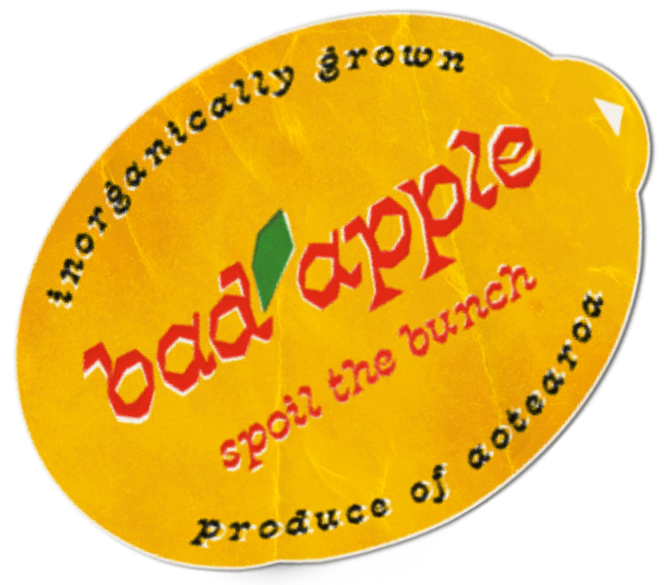By some Friday night transport miracle, I make it to Te Pou Theatre thirty minutes ahead of curtain-up on The Handlers. The front of house area—high-ceilinged, warm, and already buzzing—is decorated for the occasion: in addition to the usual Te Pou show programmes adorning the walls beside each of the entrances to the performance space, there’s a curated exhibition of vintage Crown Lynn ceramics, various designs and advertisements from throughout the years arranged in display cases with accompanying descriptive detail. There are pictures of Crown Lynn workers in black and white, as well as a selection of contemporary ceramics available for purchase. It’s an intelligent gift of context, existing in dialogue with the play; I’m glad I came early, to have the chance to take it in.
Written by Poata Alvie McKree and directed by Amber Curreen, The Handlers follows four wāhine working in Crown Lynn’s Handle Room in West Auckland in 1976. The longest-standing employee of the group is Head Handler Whero (Aroha Rawson), who has hired her two nieces, Kiri (Cian Parker) and Hine (Tuakoi Ohia), despite firm instructions from their boss John (Neill Rea) that close whānau aren’t to work on the same production line. Keeping their secret is Salote (Nastassia Wolfgramm), who has emigrated from Tonga and is allowing John to continue assuming she is Māori so as not to be moved out of the Handle Room.
The play’s initial logline centres on the disruption caused to the production line when Whero, Kiri, and Hine all take leave to attend a tangihanga, but over the course of two hours—interval included—The Handlers traverses an expansive range of experiences. It tackles pervasive workplace racism, both structural and off-hand; loss of family members; the struggle between siblings when resources exacerbate a kind of favouritism; the trauma of the Dawn Raids. And, crucially, it holds all of this up against the levity of the day-to-day: clinging to every minute of your smoko with mates; embarking on a quest to produce a mug with the perfect biscuit-retrieving attachment; bemoaning the terrible food on offer at Pākehā get-togethers.
A great deal of the laughs—and there are many of them—come from the honed meeting point between script and performers: Ohia and Wolfgramm’s hammy agreement with Rea’s John in the break room, and the instant drop of their faces behind his back; Parker’s commitment to Kiri’s efforts to upstage her sister mid-song; the journey of Rea’s socks puddling down to his ankles, one and then the other, as the workers’ climactic protest throws John increasingly off-kilter. A masterstroke of McKree’s script is that each character—and therefore each performer—is allowed to play both comedy and drama, with storylines spread so as to explore each of them, and time given to really dive in.
“A great deal of the laughs—and there are many of them—come from the honed meeting point between script and performers.”
Curreen’s direction supports this, keeping the rhythm of the work through movement motifs made all the more poignant when ensemble choreography becomes singular. The opening moments of the play—busy, high energy, and thoroughly alive, music pumping—set the pace and a top-of-show light tone that then deepens and expands as the story progresses. Moments linger, and hold weight, because they disrupt expectation, just as the subjects of them do; when Whero, whom John has been referring to as ‘Vera’ for seemingly decades (an example of recognisable racist linguistic laziness that he extends to all the wāhine), stands her ground and checks him for his widespread mistreatment, the air stands still. Rawson’s resolute stance, her firm voice, and her stillness are extremely effective; she shows us the strength Whero has always been imbued with taking an entirely new form.
Similarly, Wolfgramm’s arc as Salote is a stunning piece of work: she captures your heart immediately—kind, conscientious, and hopeful, her earnestness slipping over into comedy but never landing her as the butt of the joke—and then causes it to break, as Salote faces the outcome of deceptive hiring practices and the complete upheaval of her family, torn apart by a police raid. Truly, there isn’t a weak link in the cast: Ohia as Hine plumbs the depths of a character that, in the hands of a lesser actor or a lesser writer, would come across as one-note; Rea adeptly navigates the balance of John’s bumbling and his harmful hardlines; and Parker as Kiri is so charged with well-wielded energy that you simply can’t take your eyes off her.
All these performances are anchored on a split stage, the Handle Room floor on one side and the break room on the other (complete with lockers, a table and chairs, and a station for tea, notices, and the usual staffroom memorabilia). We see the tables at which the wāhine work in the Handle Room, tray racks of cups on rolling metal carts off to the left and the walls decorated with a clock and various accoutrement from across Whero’s time as a handler, including when Queen Elizabeth II visited the factory. These walls also function as flats, concealing the depths of the stage, forming a corridor to the rest of the factory. Through a series of backlit ‘windows’ on these walls (glowing warm in evocation of that classic 1970s burnt orange), we catch other action throughout: the workers’ protest, entrances and exits, resolution. Design team Jane Hakaraia, Connor Magatogia, John Parker, and Elizabeth Whiting have worked across the board through lighting, set, props, costume, and sound to anchor the play in its distinct historical context.
“With deft fingers, The Handlers holds this inescapable reality up alongside the structural racism on display in Aotearoa.”
Particularly worthy of note is the use of the Handle Room’s radio. Alongside a curated soundtrack that has the audience grooving in their seats (and which skirts on the edge of overpowering the odd line of dialogue), it features news bulletins contemporary to the period. Included is coverage of ongoing oppression and resistance in Palestine (the play’s 1976 setting brings to mind Land Day). Through this, the company adroitly reminds audiences that the exponential escalation of colonial violence on that same whenua over the past months is not new, but rather the latest surge of a campaign spanning decades. With deft fingers, The Handlers holds this inescapable reality up alongside the structural racism on display in Aotearoa, pointing out the insidious pervasiveness of colonisation and white supremacy across all reaches of the world. What has changed in the 48 years since the events of the play? And more importantly—what hasn’t? (Crucially, we’re also reminded that material change—on the scale of Crown Lynn’s fictionalised production lines and beyond—requires direct, intentional community action.)
Across its two-hour runtime, The Handlers proves its expansiveness in droves; drawing deep laughter, frustration, recognition, heartache, nostalgia, determination, and warmth from the audience, each facet informs the other and leaves them all more impactful. Once the house lights come back up after the effusive curtain call—complete with standing ovation—I leave the theatre. My fellow audience members pour out into the front of house area, groups of wāhine taking selfies, older women raving about the show (“I knew I had to invite you.”), people collecting in front of the show programme to learn more about the team behind it all. Several make their way over to the Crown Lynn ceramics exhibition, in search of a glimpse—or a reminder—of the products the real Handlers created. With performances still on for the rest of this week, I’d suggest you find some time to do the same.
Tickets for The Handlers are still available for the Thursday 30 May, Saturday 1 June and Sunday 2 June shows. You can purchase your tickets directly from Te Pou via their website.



